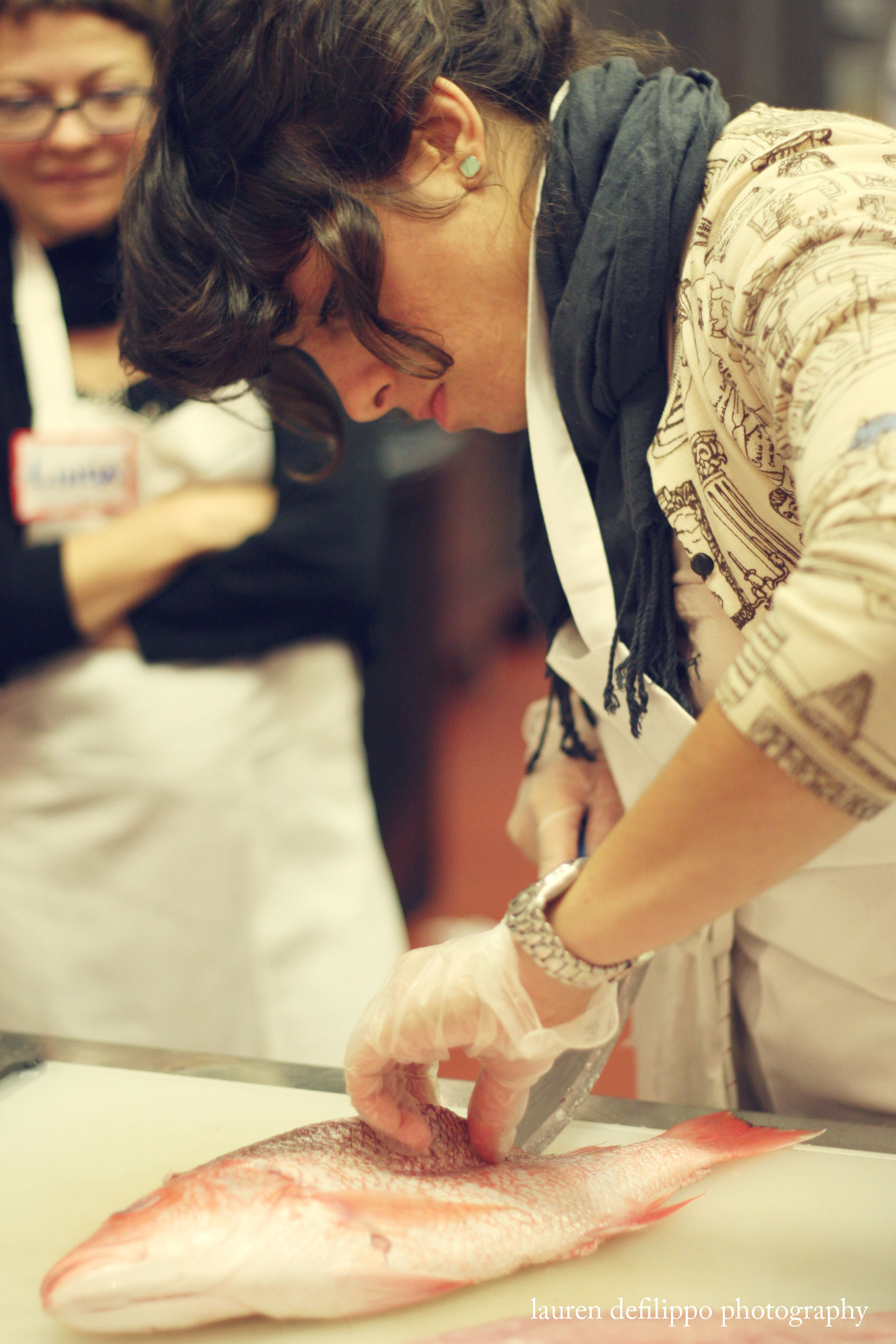Photos by Lauren DeFilippo
There are many labels you could apply to the tasting menu at Brooklyn's Take Root: farm-to-table, sustainable, seasonal. But these increasingly popular, conscious-consumer terms still miss the mark. For while this intimate—verging on tiny—restaurant is all of those things, it is, most importantly, attentive. Attentive in the sense that Chef Elise Kornack has an uncanny awareness of her ingredients and, in turn, encourages diners to take note of her unusual culinary perspective.
Amuse bouche
If it sounds like I'm gearing up to make a bold claim, I am. My meal at Take Root was the most texturally perfect series of plates that I've ever tasted.
Starting with the amuse bouche. A play on carrots and circles, combining caviar-like spheres with crunchy disks and a delicate puree. It was a leitmotif of flavor in a tiny bowl, a question of what is a carrot, and yet, easy to enjoy without considering any of this. The lingering flavor of incredibly fresh mint made this dish doubly worth the while.
Egg
Then came a soft boiled egg with paprika mayonnaise, pickled onions and mustard seeds, rustic bread and home-whipped butter. I've never been a big fan of deviled eggs, but I appreciated the contrasting textures of this more challenging deconstruction, particularly the mustard seed. As for the aerated butter, that deserves its own rave review.
Squid
Next was an appetizer of tender rings of calamari, delicate peppery arugula and crisp lady apples with creamy cranberry beans. It was mild, but still dynamic—the type of dish that is best appreciated on a fresh palate.
French onion soup
Then came a surprise course, an evolved French onion soup. The deeply flavorful, strained broth and wafter-thin pain de mie toasts with a smear of midnight moon gouda was a revelation. Food this thought-out is typically outside of the realm of craving. But if you asked me what I'd like to eat every day for the next month, I'd choose this soup.
A pause to recognize one of the other truly impressive parts of dining at Take Root—their playlist. Curated by Elise's partner, Anna, the mix of Joni Mitchell, Madeleine Peyroux and Alexi Murdoch (to name a few) perfectly fit the mellow space and pace of the meal. In a city where so many restaurants prefer rock and hip-hop, it highlighted Take Root as the exception, a more subtle escape from New York's hectic pace.
Egg noodles
Back to the menu, hand-rolled egg noodles arrived in a delicate sauce of sweet corn milk. Dotted among the coils were briny salmon roe, adding a savory counter flavor to the sweetness of the dish. The following course was a striped bass with shatteringly crunchy skin, tender baby eggplants and meyer lemon hollandaise. Despite its mix of unexpected ingredients, the dish was perfectly balanced. Neither the aerated hollandaise or creamy eggplant overpowered the flavor of the wild bass.
Striped bass
As the evening slowly unfolded, we reached the chicken course, which featured multiple cuts from the same animal. Feather-light croquettes deflated beneath their remarkably crispy crust, while the surprisingly gamey breast proved surprisingly moist. The liver mousse was my favorite of all, creating a funky contrast with the essence-of-grape intensity of the halved concords scattered around the plate.
Fleisher's chicken
For dessert, Elise presented an almond semifreddo—a reminder of what almond should taste like, with a light, silky texture to boot. And I couldn't get over the beautiful hue of the elephant heart plums, dragging the ragged, ripped sponge cake through the intensely colored, sweet-tart plum coulis.
Almond semifreddo
Though some dishes were more experimental than others, the multi-course tasting fit together like a patchwork quilt. With no national or cultural cuisine to stitch them together, Elise's unique perspective on cooking tied together the disparate dishes. The experience is unusually personal, clearly revealing the chef's hyper-focused palate and culinary intentions.
In a day and age when "foodies" troll reality TV and read Food Network Magazine for a behind-the-scenes glimpse of their favorite chef, it's refreshing to remember that much of what we want to know can be communicated on the plate. Like any great novelist or painter, true chefs need only provide the bearings inherent to their work. And while Elise and her partner Anna are happy to tell you more, the best part of the meal might be that they don't have to.
Take Root
187 Sackett St, Brooklyn
Thurs-Sat, 8pm seating











